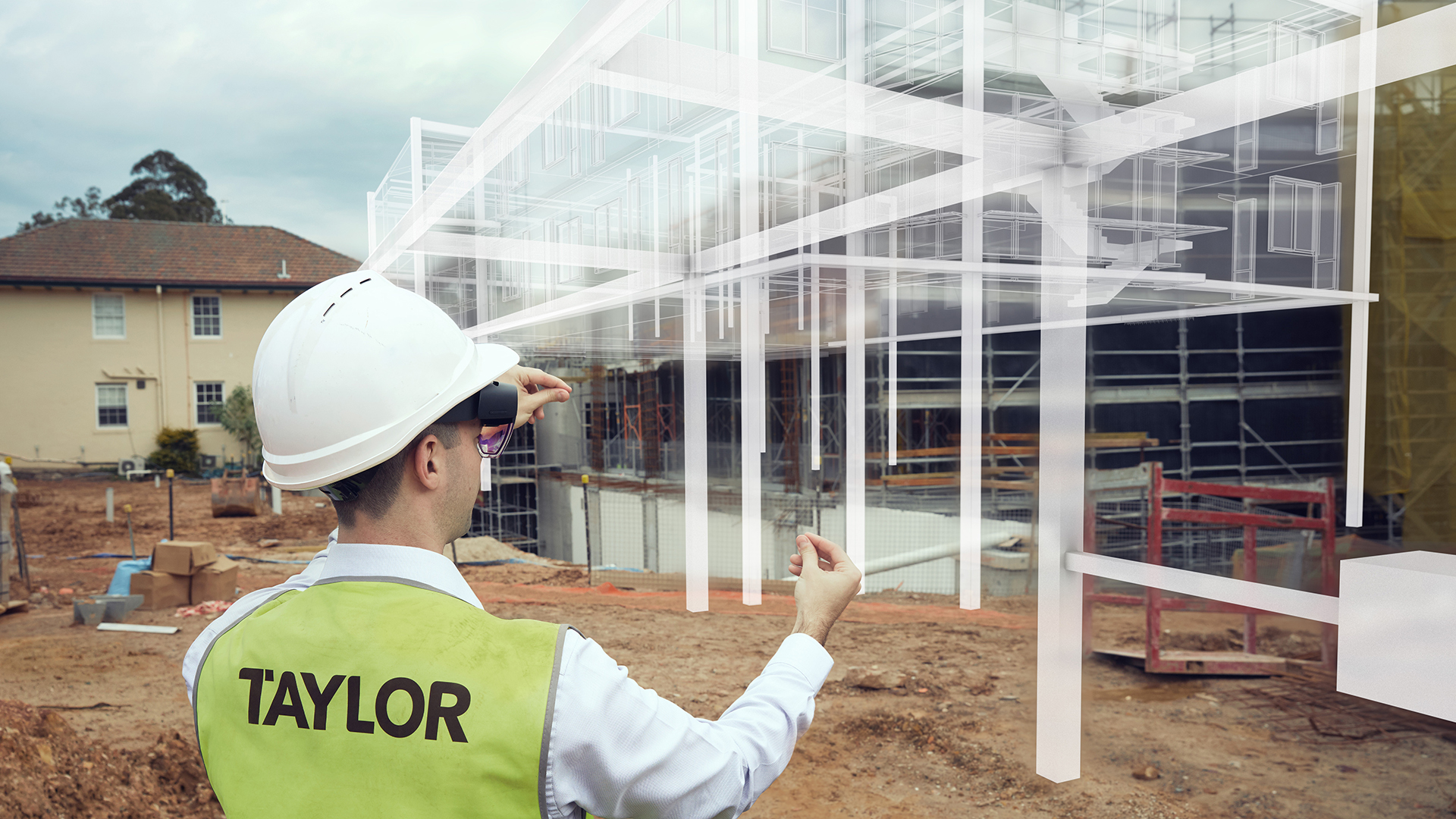Emerging technologies are disrupting the property and construction industry and the COVID-19 pandemic has only accelerated this process. The Taylor team, led by IT Manager, Christian Neyle, believe in being first adopters of emerging technologies in construction. That’s why we’re currently trialling; worksite 5G, Augmented Reality / Virtual Reality (AR/VR) 3D models and 4D planning. Investing in the knowhow and multi-discipline partnerships that will move our industry forward matters more than ever, as we plan for the post-pandemic recovery.
Our digital transformation journey with 5G has pioneered 5G Cradlepoint solutions for Taylor work sites.
Selected as a Telstra joint venture partner to trial 5G for business, we’ve implemented cutting edge site technology to deliver the fastest and strongest internet connections available today. 5G for work sites can capture construction works in real-time with no delay; 360 camera views, real time remote safety checks, and remote client access to view live job progress. Greater cost control is achieved through visible asset connectivity at project sites, weeks are saved on IT site setup, and on any potential IT relocations throughout the duration of a program.
The business return on increased IT productivity doesn’t stop on site. 5G delivers improved mobile network experience for better collaboration with 4GX LTE, and, as Christian notes, “It also presents multiple benefits for remote working, presentation, client liaison and design collaboration.”

What’s happening today in the field of technology will impact the construction sector significantly over the next decade. Taylor work with a number of leading vendors, including Telstra Purple, the technology consulting arm of Telstra, to leverage future technologies and current trends. Partnering with technology leaders such as Microsoft in the US, and Bentley Software, Taylor is applying Augmented Reality, Virtual Reality, HoloLens hardware, and cloud computing to the design and delivery of highly complex projects.
Working with Microsoft, we can take clients through ‘live’ build models, in detailed timelapse experiences of highly complex development projects, with the end result displayed in virtual reality, at full scale. The quality and quantity of pre-construction work is made visible, accurate reporting can be visualised from start to finish, and program timeframes are brought to life for project stakeholders – it’s a win for everyone.
Certain hardware, software, and computing combinations Taylor is trialling for construction have never been tried before. For example, with complex construction content, current HoloLens headset hardware needs a ‘get around’, so we’re cloud streaming content to facilitate greater computing capacity. This allows us to view complex models, overlayed onto plans, documenting project progression in line with the project timeline and delivery plans for enormous construction projects.

For AR/VR projects, we aim to see weekly use on site, where project foremen and subcontractors use 3D design models to filter sub-contractor works, forecasting two weeks ahead. For example, electrical installation can be forecast and previewed over two weeks, so everyone can view any obstacles or challenges prior to installation. Augmented Reality HoloLens applications can be adopted onsite so subcontractors can ‘see’ what needs to be done, any problems to overcome, and identify workarounds. The project teams gain a better understanding of what will, or will not, work particularly on complex or challenging builds.
When something hasn’t been done before, there are always risks or barriers to success.
Part of an industry information technology leadership group, Christian usually catches up twice a year with peers in property and construction to share trends, ideas and mutual learnings. Practical applications for some new technologies discussed may still be some time off.
“Many of these technologies come with all the testing, false starts and integration barriers associated with breaking new ground,” says Christian, “Whilst new now, we believe these applications will be common practice within 3 to 5 years.”
We’re helping to accelerate the adoption of emerging technologies in property and construction. The investment we make now will reap great results – not just for us, but for our clients, the industry as a whole, and the Australian economy.
Back to News & Media
